How can I make our Christmas celebrations more eco-friendly without setting myself up for disappointment or causing my kids to hate everything ecological? Like with all other areas of my life, I tried to have an “easy does it” and “step-by-step” approach, seasoned with lots of self-love. My approach was also to practice “live and let live,” respecting other family members’ pace and making compromises. I did not want to have a zero-waste Christmas this year, only to fall back into consumerism next year… Instead, my aspiration is a long-term and lasting change that does not overwhelm my family. We thus started by introducing 7 simple changes to move towards a more eco-friendly Christmas.
1) Green Christmas tree
I have read from various sources that if you already have an existing artificial Christmas tree, it is better to reuse it than to buy a new one. We have had our artificial Christmas tree for 9 years, so we thought we would keep using it. Yet Lev, our 6-year-old son, really wanted to have a real Christmas tree this year. He has never had that experience and mentioned it several times.
As discussed in my recent blog post on green parenting, Lev recently struggled with eco-aversion. I knew thus that for a long-term impact, I needed to compromise. We thus went together with Lev and bought a live Christmas tree in a pot. The person who sold trees knew a lot about various varieties of spruces. During an interesting discussion about how to care for the tree so that it would survive transplantation after Christmas, we were advised to:
– Put the tree on a balcony and not keep it inside, if possible
– Choose a tree that is not too tall and a variety that lives naturally in our region
– Plant it in our garden right after Christmas to make its time in the pot as short as possible.
Based on this guidance, Lev chose among the possible trees. Later, the kids loved decorating the two Christmas trees: one outside overlooking the snowy Alps, and the other artificial one inside. If you live in a windy place, be mindful of how to secure the tree so it does not fall during stormy weather, like ours did 😊
2) Sustainable Christmas decorations
In previous years we already had slowly started to make Christmas more eco-friendly, although not always for sustainability reasons. For instance, we used an artificial Christmas tree partly because we were afraid that our puppy Fleur might like to eat a real one 😊. Last year, I got solar-powered outdoor Christmas lights because the other ones were all sold out. I also bought some wooden vintage-looking Christmas tree decorations, presented on one of the featured photos. They looked distinctive and were less expensive than others.
Repairing Christmas wreath
This year, though, we decided to take the decorating to another level. For instance, the Christmas wreath we’ve had for a few years had lost many spruce branches, and the remaining ones had all dried out and turned light brown. I thus removed them:
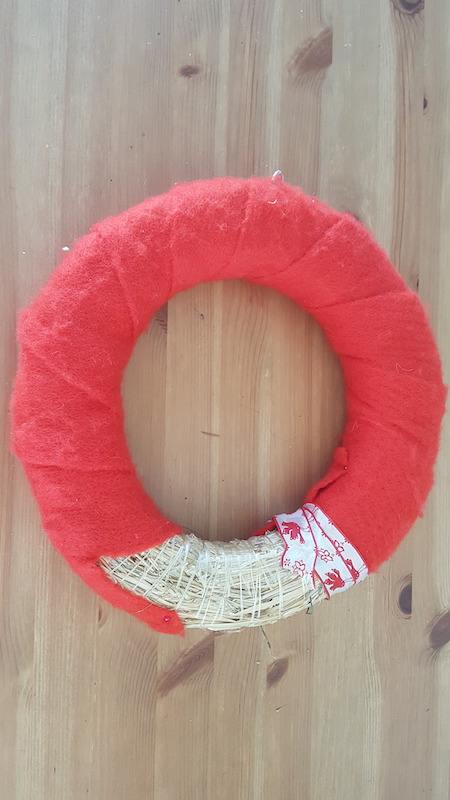
My son Max and I replaced these with some other evergreens from the garden. I had needed to trim these anyway, as they were blocking the path.
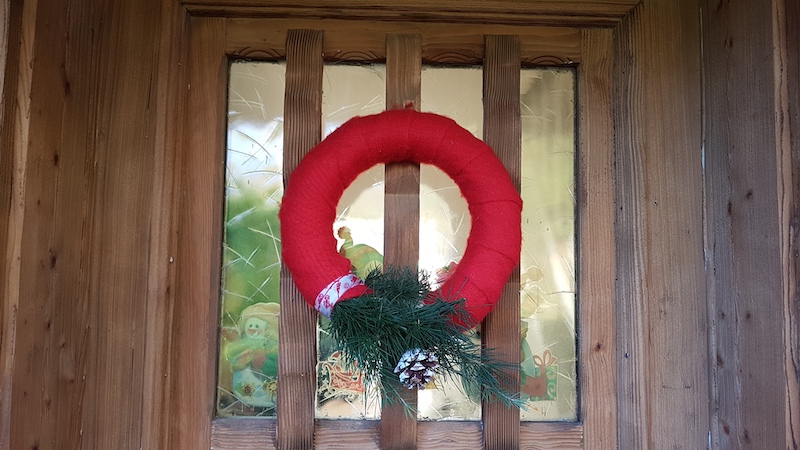
Previously, such a situation would have been for me an excuse to buy a new wreath…
Repairing solar Christmas lights
Another sustainable step we took with decorations was trying to repair the solar Christmas lights we bought last year.

To make a long story short, this year when it was time to put up decorations, neither of our strings of Christmas lights worked 🙁 I first thought that I could change the battery, but realized it was all glued together without any screws. We had purchased single-use Christmas lights! Still, determined, and with the help of my husband, we set the single-use lights up and were able to change the battery of one string and thus repair it. We had to buy a new replacement for the other string of lights, though, as we could not repair it, so we chose another solar one. In short, I am trying to get back to applying what my grandparents did. Or what these days is called “waste pyramids” or ways of “circular economy”:
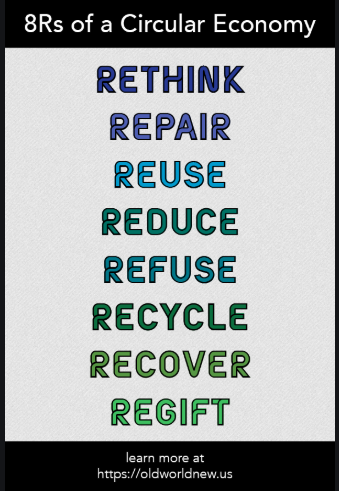
However, I have these broken strings of Christmas lights, and if anyone has any great ideas for how to reuse them, I would be very grateful!
3) Eco-friendly gifts
This is an area where I pretty much started from the scratch this year. Previously, I was not really conscious of the environmental impact when I bought gifts. It made things a bit harder in some ways –in addition to looking for things that I thought a person might like, I had to think of what material the gift is made of and whether I could find more sustainable options.
I also had to overcome my fear of making second-hand or recycled presents, something that I previously did not really do at all. Yet once these hurdles were crossed, things went rather smoothly. For instance, for people who like to read, one can always buy second-hand books. For those who love good food, edible presents are a great way to show your affection. Many kinds of jewellery are made of recycled materials these days. Or you can offer experiences as a gift, like cinema tickets or enrolment in cooking classes!
My two older kids’ Christmas gifts will not be as green as I would like this year. We decided to respect their letters to Santa this time to prevent them from falling into eco-rejecting behaviour. As mentioned, Lev is slowly recovering from his eco-aversion. Having a long-term vision, I have decided to choose my battles and respect his pace of transitioning. And anyhow, since Lev is the only full vegetarian in our family, he has the smallest carbon footprint of any of us 
4) Green gift wrapping
As with Christmas decorations, I had already begun keeping Christmas gift wrapping bags to reuse them a few years ago, but this practice was not consistent and covered only a small set of Christmas gifts. For the majority of Christmas gifts, I used wrapping paper. Yet facts make you reconsider. Wakecup writes, for instance, in their blog:
– Each Christmas just under 100km2 of wrapping paper ends up in UK landfill or is burnt!
– 125,000 tonnes of plastic packaging is thrown away, that’s a 25% increase compared to other times in the year.
Therefore, this year I decided not to buy any new wrapping paper. As much as possible, I tried to reuse what I already have from gifts or packages that I have received. To tie the packages, I used pieces of my evergreens that I trimmed off:

Or this option:

I also wrapped some gifts into scarves that I thought the person might use.
Many other interesting ideas for wrapping Christmas gifts can be found in The Foraged Life blog post “Wrapping Presents with Zero Waste.”
5) Greener Christmas travel
We decided to spend Christmas this year with in-laws in Brussels. We usually fly there, but this time we will drive there. It will take more time, but we can know we did all we could to travel more sustainably. When children are older, we will also try out the railway. For the time being, as discussed in the post about my daily commute, traveling on a train that has no seatbelts remains a challenge😊
6) Donate toys that could be used as Christmas gifts
My husband and I love when our kids donate a big part of their toys 😊 They have so many, and they love to cover the whole house with them! Erica Layne, a minimalist mom of three, writes well about having fewer toys at home:

Yet Lev has been a little collector since his toddler years, picking up and bringing home hundreds of little branches and stones from daycare. It is thus difficult for him to let go of things. I proposed a few times last week that he give up some toys, but the answer is currently “no.” I did not push him more. However, his little brothers were more willing.
7) Greener Christmas elves
In my country, we have a tradition that during the month of December, when one is a “good child,” Christmas elves come at night and put sweets or little toys in their slippers on the window sill. We had done that also some years at home, but it is rather challenging for parents, as one cannot forget about it during a period of 24 days. Unless you want your kid to wake up feeling bad about herself… Moreover, it makes kids to eat a lot of sweets and parents to buy a lot of little toys, often made from plastic, that will be forgotten in few days…
However, it is a beautiful tradition I grew up with and I have cherished memories about. I would not like to deprive my kids of it. As a compromise, we did not remind the kids about it on the 1st of December, and the little elves started to come only when kids remembered to put their slippers out. The elves brought sweets and no plastic this year! Therefore, the tradition is still there, but we use fewer things and make sure they’re sustainable.
For future Christmas
If I had celebrated Christmas at home this year, I would have gone for a vegan Christmas dinner. This will be something to try out another time. Moreover, I will also definitely consider re-gifting this year. For me, this has been a kind of “unthinkable act” until now, as mentioned by Holman, Moore, and Bhasin in in their article “Used stuff is the next big trend in Christmas shopping.” But there is a first time for everything.
I would love to hear about you – what are your ideas on how to make Christmas more sustainable?



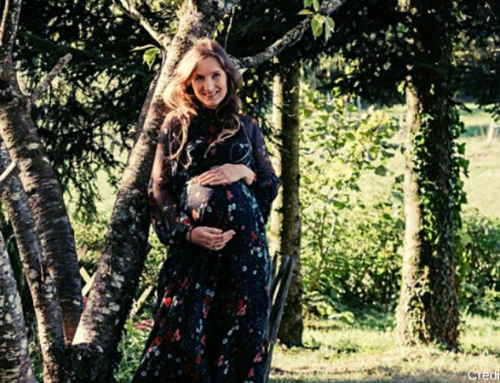
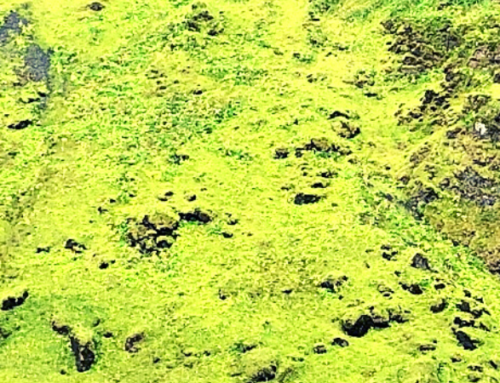
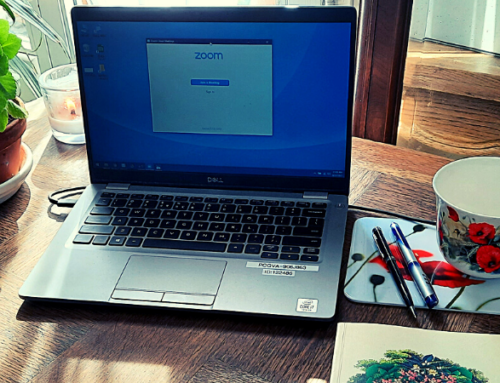
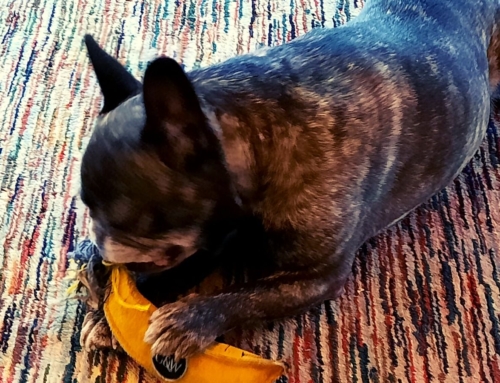
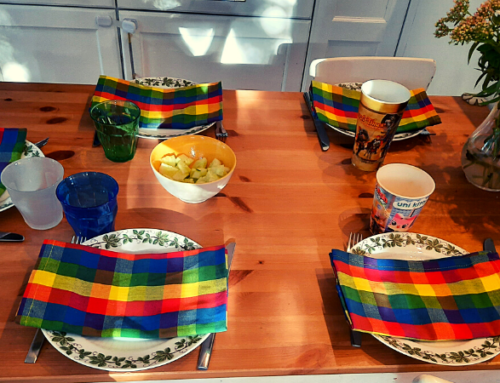
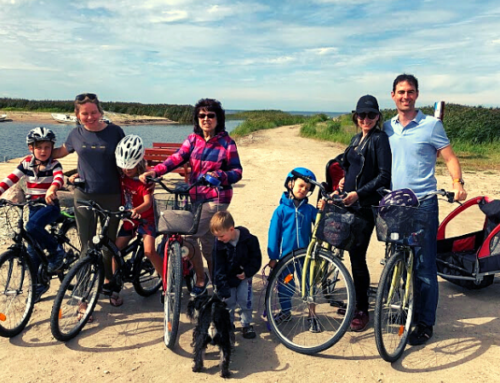
Hello Veronika, thanks for all. It’s inspiring as usual. We have chosen to have a artificial Christmas tree a few years ago after having had a little pine tree, that finally outgrew the possibility to take it into the house.
When it comes to gifts, the most important change I think, is by not offering anything. However, with kids, this is not possible.
This Christmas, we are celebrating with my Dad and my sisters family. She wanted to offer a little thing to everyone and I agreed. I’ve chosen to go as zero waste as possible and found almost everything at LUSH: soap bars, bodylotion bars, refillable facial scrub, shampoo bars. I also bought toothbrushes for everyone, made of wood here in Switzerland. I’m using brown recycled paper to wrap things. This paper can be painted so kids get to do their personal wrapping paper which is fun. And I offer my homemade, almost vegan Christmas cookies.
Thank you Maya for your great tips! I never thought of using pine to decorate for Christmas, but I love the idea! We have a little pine in a pot outside and I will propose next year to kids to bring it in or put to balcony for decorating. And thanks for the idea to use the brown paper for personalised wrappings painted by kids – will for sure try this out with my boys!